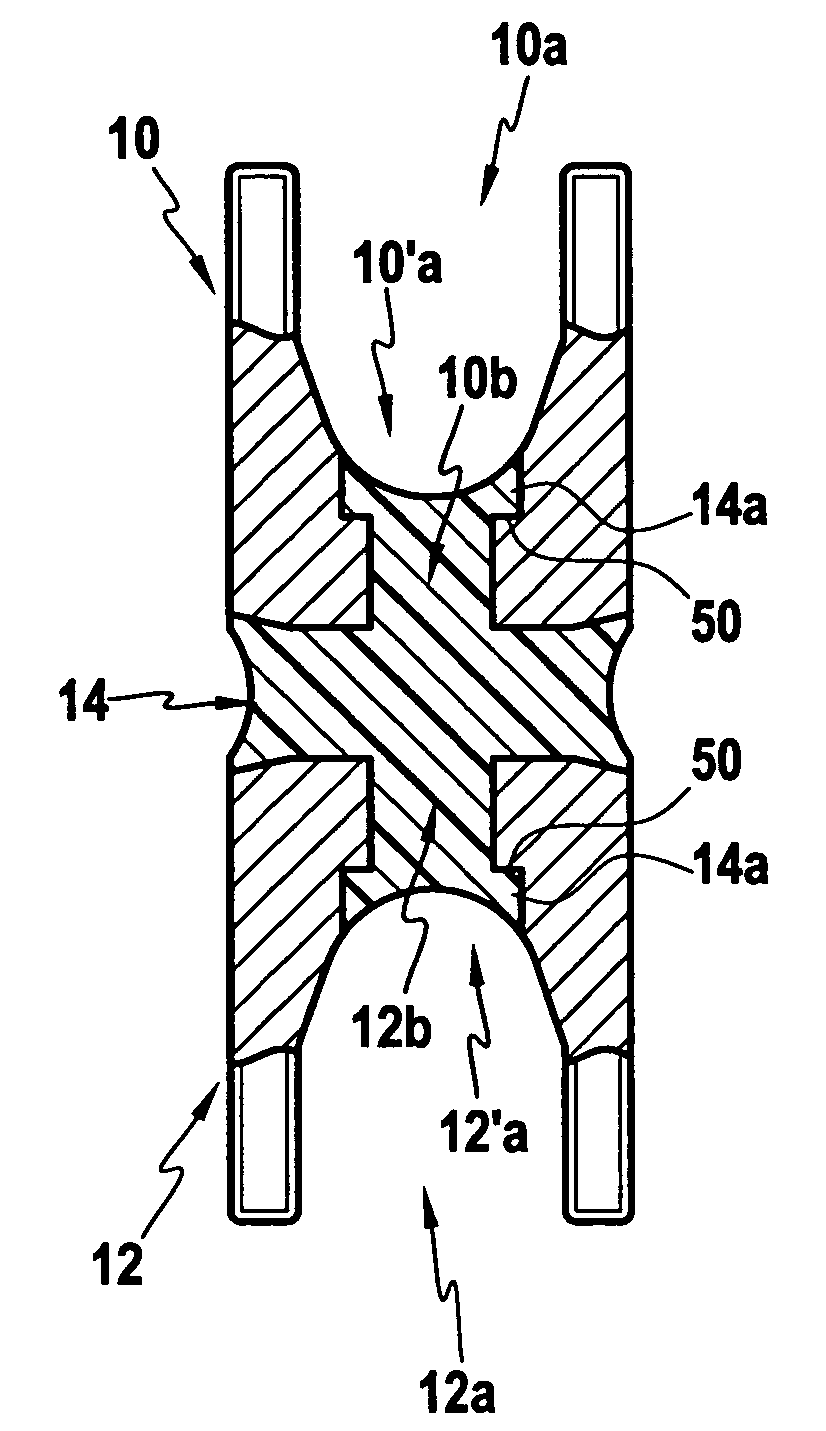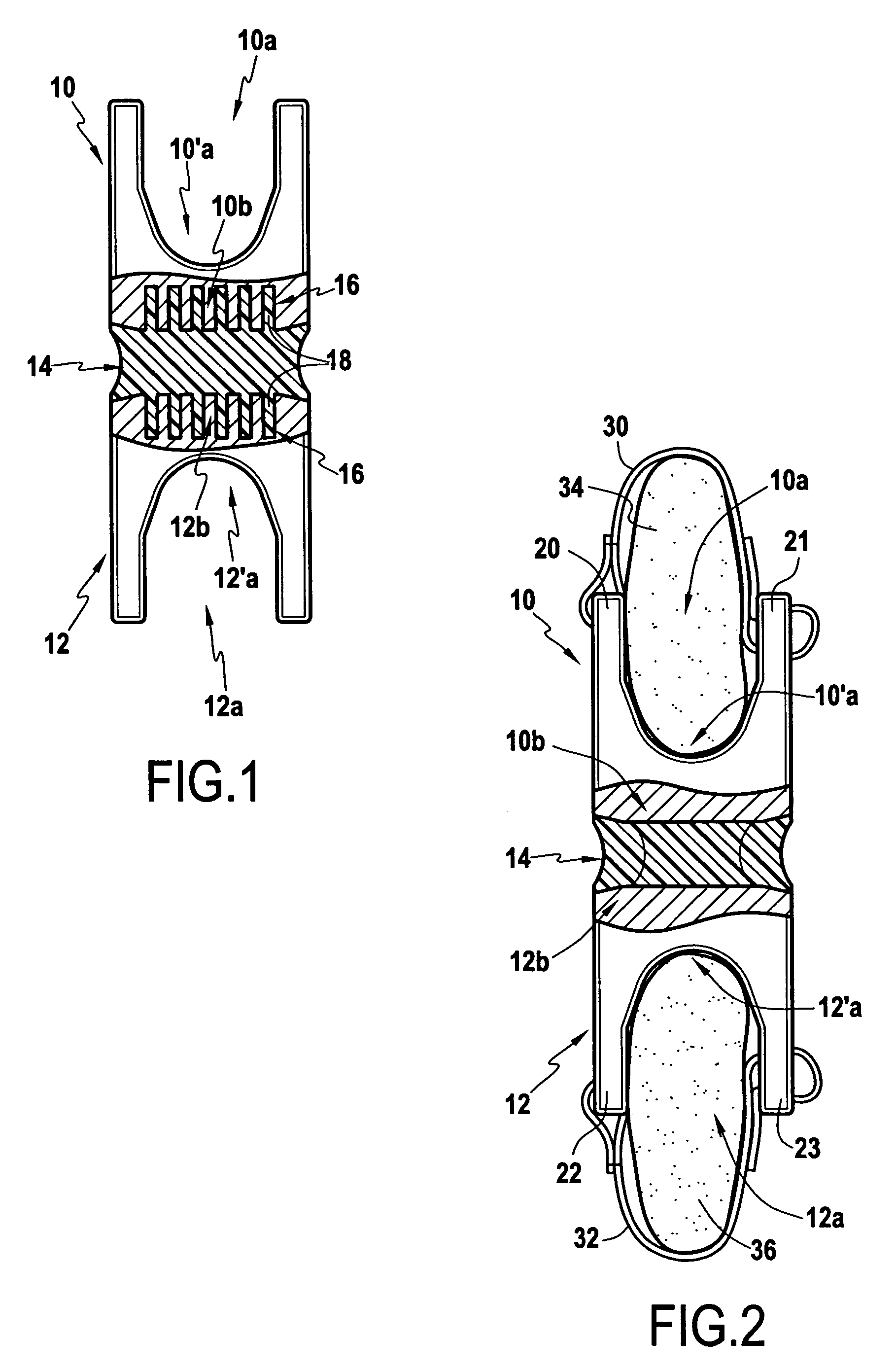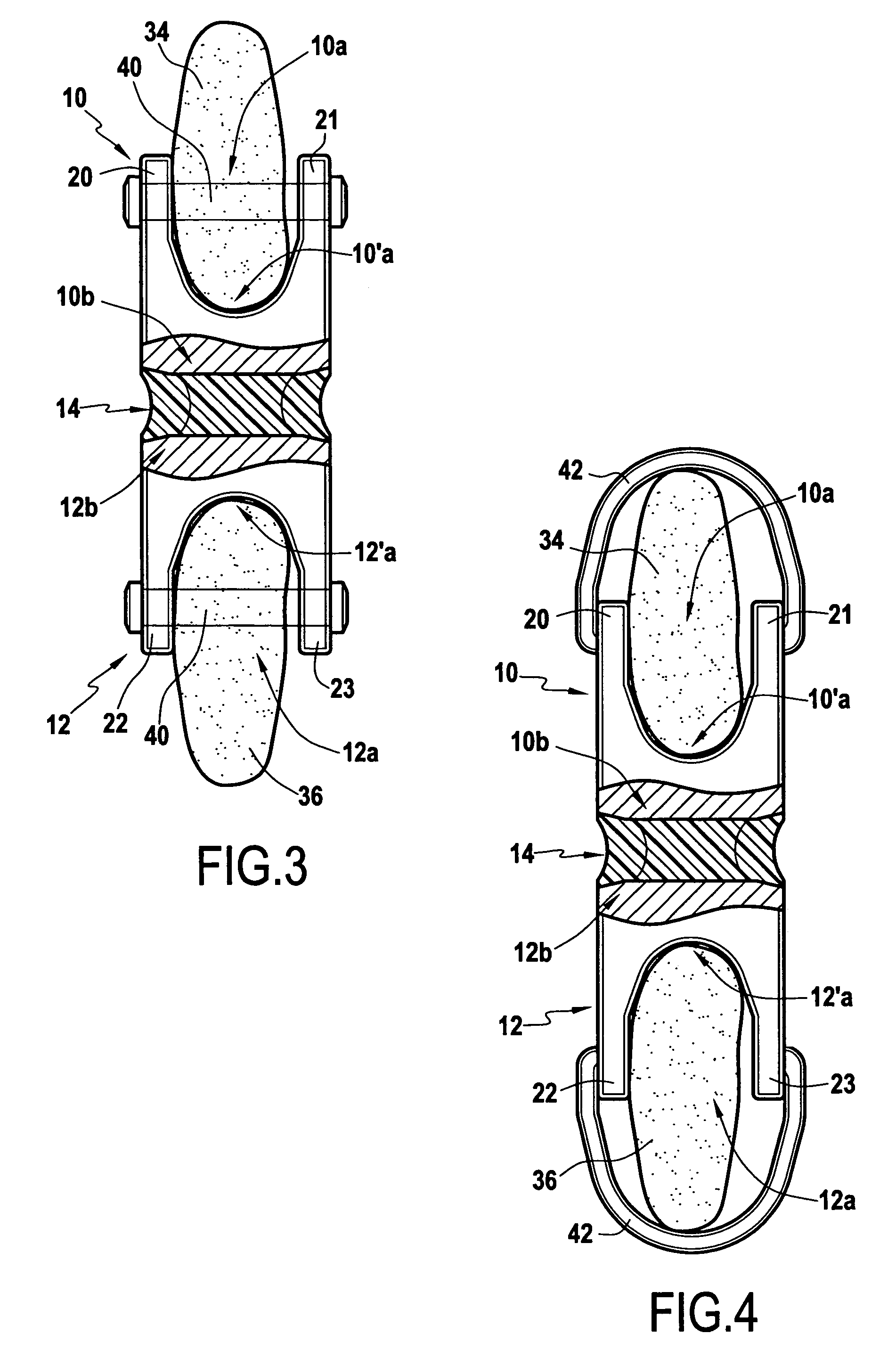Shock-absorbing intervertebral implant
a technology of intervertebral implants and shock absorption, which is applied in the field of intervertebral implants, can solve the problems of nerve roots being trapped, two vertebrae separated by the disk to move abnormally towards each other, and the person affected by this problem to experience pain
- Summary
- Abstract
- Description
- Claims
- Application Information
AI Technical Summary
Benefits of technology
Problems solved by technology
Method used
Image
Examples
Embodiment Construction
[0026]The spacer and the method of connecting the elements that constitute it are described initially with reference to FIG. 1.
[0027]The intervertebral implant includes two symmetrical elements 10 and 12 each presenting a first end 10a and 12a and a second end 10b and 12b. The two elements 10 and 12 are made of a bio-compatible material of the titanium-alloy type, suitable for remaining permanently inside the body on the spine.
[0028]Each first end 10a, 12a presents a notch 10′a, 12′a in which a spinous process is capable of bearing in such a manner that each first end 10a, 12a surrounds substantially half of the circumference of a process, said process passing through the first end 10a, 12a.
[0029]The elements 10 and 12 are interconnected by a connection piece 14, interposed between them, in such a manner that said elements 10 and 12 are held symmetrically relative to each other. More precisely, it is the two ends 10b and 12b of the elements 10 and 12 that are interconnected.
[0030]T...
PUM
 Login to View More
Login to View More Abstract
Description
Claims
Application Information
 Login to View More
Login to View More - R&D
- Intellectual Property
- Life Sciences
- Materials
- Tech Scout
- Unparalleled Data Quality
- Higher Quality Content
- 60% Fewer Hallucinations
Browse by: Latest US Patents, China's latest patents, Technical Efficacy Thesaurus, Application Domain, Technology Topic, Popular Technical Reports.
© 2025 PatSnap. All rights reserved.Legal|Privacy policy|Modern Slavery Act Transparency Statement|Sitemap|About US| Contact US: help@patsnap.com



